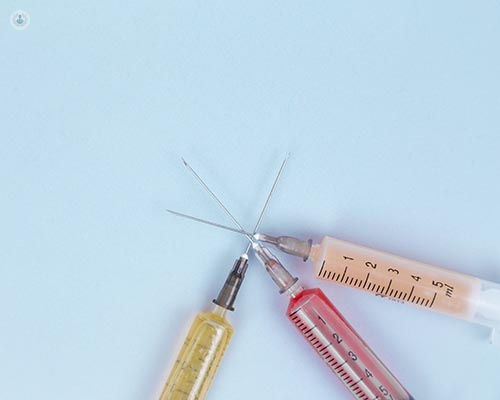An overview of Botox treatment
Written by:As the so-called “signs of ageing” begin to appear on the face, such as round the forehead, many people attempt to reverse this effect through Botox treatment. Distinguished consultant aesthetic and plastic surgeon Dr Jacqueline Lewis is here to explain more about the treatment.

How permanent are the results of Botox treatment?
Botulinum toxin treatments are typically said to last between three and four months. However, in my clinic, I use higher concentrations in lower dilutions, and my clients typically schedule their follow-up sessions every 6-9 months.
It is fortunate that the impact of the toxin eventually diminishes, allowing the muscles to regain their function. This is crucial, as unintentional muscle weakening can lead to undesirable effects, such as ptosis (drooping of the upper eyelid), caused by the weakening of the upper eyelid levator muscle, and can be reversed over time.
What strategies can be employed to ensure that Botox treatment gives natural-looking results?
The toxin can be diluted to give different strengths in a certain volume, which affects the spread of the toxin. Higher concentrations of toxin in lower volumes will spread less. I typically tailor dosages and dilutions based on the targeted area, considering each client's goals and preferences
Why does Botox sometimes leave patients with a frozen, unnatural or harsh appearance?
It is said that humans can make more than 10,000 facial expressions with the 43 different muscles on our faces. So why might someone look frozen or unnatural with a Botox treatment?
Typically, my clients come to me for Botox treatment because they want to look less worried, less tired and they don't want to appear annoyed, angry or sad. If you imagine you were going to draw a caricature of a person who was angry, you would draw their brows close together, they would have small eyes and you might add some vertical lines in between their brows. If they were unhappy or sad, you would draw their mouths with downturned corners.
This is why the most common areas for Botox treatment are the forehead, brow and periorbital lines. Certain patients choose to have their mouth corners treated as well to lift the corners.
However, once one area is treated, the other surrounding muscles tend to appear more active. For example, if the ‘11’ lines in between the brows are treated, the muscle fibres of the orbicularis oculi (that close the eyes) can appear overactive, causing more lines on your nose (Bunny lines), in turn giving you an unnatural appearance.
If too much toxin is used over a large area on the forehead or around the eyes, you can look expressionless or frozen. Sometimes, a harsh appearance can result if the brows are overtreated close to the midline and undertreated laterally causing an overactive lateral brow arch.
What are the unwanted effects of Botox treatment?
One unwanted effect of Botox is a lop-sided smile. This can occur when treating the corners of the mouth, if the injector hits the DLI (depressor labii inferioris) muscle rather than the DAO (depressor anguli oris).
It is essential to speak to your injector about what can be done to remedy or prevent these unwanted effects. Additionally, it is crucial for you to tell your injector what you wish to achieve. It is always best to under treat and come back for more treatment, if necessary after two weeks, so that your injector can adjust the dose to meet your needs.
If you would like to book a consultation with Dr Lewis, do not hesitate to do so by visiting her Top Doctors profile today


